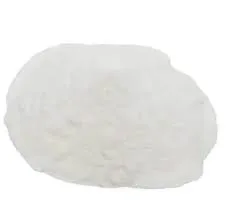
Nov . 09, 2024 18:23 Back to list
Hydroxypropyl Methylcellulose Powder Applications and Benefits for Various Industries
Understanding Hydroxypropyl Methylcellulose (HPMC) Powder Its Applications and Benefits
Hydroxypropyl Methylcellulose (HPMC) is a versatile and widely used hydrocolloid that has garnered significant attention in various industries due to its remarkable properties. This cellulose derivative is synthesized from natural cellulose, which is modified chemically to enhance its solubility, stability, and compatibility with different formulations. HPMC powder is known for its gelling, thickening, and film-forming abilities, making it an essential ingredient in many applications.
Composition and Properties
HPMC is a non-ionic polymer that is typically available in various grades, each characterized by different molecular weights, degree of substitution, and properties. These variables determine HPMC’s functionality and suitability for specific applications, such as controlled drug release in pharmaceuticals, moisture retention in food products, and binding properties in construction materials.
The powder form of HPMC is white, odorless, and does not promote browning or discoloration, which makes it an ideal choice for various formulations. Its ability to form gels at elevated temperatures and to retain moisture has established HPMC as a preferred ingredient in both food and pharmaceutical industries.
Applications in Pharmaceuticals
In the pharmaceutical industry, HPMC is particularly valued for its role as a binder and coating agent in tablet formulations. It aids in the uniform distribution of active pharmaceutical ingredients, ensuring consistent dosage and effective release profiles. HPMC’s gel-forming capabilities also make it suitable for controlled-release formulations, allowing for sustained drug delivery over extended periods. This property is especially beneficial in chronic condition management where maintaining therapeutic levels of medication is crucial.
Additionally, HPMC is used in ophthalmic preparations due to its excellent lubricating properties. Eye drops and gels containing HPMC provide moisture and protection to the ocular surface, helping to alleviate symptoms of dryness and discomfort.
Role in Food Products
The food industry has embraced HPMC for its multifunctional properties that enhance texture, stability, and moisture retention. As a food additive, it serves as a thickener, emulsifier, and stabilizer. HPMC can be found in a variety of products, including sauces, gravies, and salad dressings, where it contributes to the desired viscosity and mouthfeel.
hydroxypropyl methylcellulose hpmc powder

Moreover, HPMC is recognized for its ability to improve the shelf life of products by preventing moisture loss. In gluten-free baking, it acts as a vital ingredient that helps mimic the structural and textural qualities of gluten, resulting in improved dough handling and final product quality.
Construction and Other Applications
In the construction industry, HPMC is utilized as an essential component in dry-mix mortars, tile adhesives, and plasters. Its water-retention properties ensure that the applied mixtures maintain optimal moisture levels for better adhesion and workability. Furthermore, HPMC imparts remarkable flexibility and strength to construction materials, which leads to enhanced durability and resistance to cracking.
Additionally, HPMC has applications in cosmetics and personal care products, serving as a thickening agent and stabilizer in creams, lotions, and gels. Its gentle nature makes it suitable for sensitive skin formulations.
Benefits and Safety
One of the remarkable aspects of HPMC is its safety profile. It is considered non-toxic, non-irritating, and is generally recognized as safe (GRAS) by various regulatory agencies worldwide, including the FDA. This makes HPMC an attractive option for formulations in sensitive applications, ranging from pharmaceuticals to food products.
Moreover, the versatility of HPMC, combined with its compatibility with various ingredients, allows for innovative formulations that meet growing consumer demands for products that are effective, natural, and safe.
Conclusion
Hydroxypropyl Methylcellulose (HPMC) powder is undoubtedly a vital ingredient that plays a significant role in numerous industries. Its unique properties and versatility make it indispensable in applications ranging from pharmaceuticals to food, construction, and cosmetics. As industries continue to explore innovative formulations, the importance of HPMC and its contributions to enhancing product performance and consumer experience will undoubtedly remain pivotal. Through continued research and development, HPMC will likely find even more applications, ensuring its place as a cornerstone in modern product formulations.
-
Versatile Hpmc Uses in Different Industries
NewsJun.19,2025
-
Redispersible Powder's Role in Enhancing Durability of Construction Products
NewsJun.19,2025
-
Hydroxyethyl Cellulose Applications Driving Green Industrial Processes
NewsJun.19,2025
-
Exploring Different Redispersible Polymer Powder
NewsJun.19,2025
-
Choosing the Right Mortar Bonding Agent
NewsJun.19,2025
-
Applications and Significance of China Hpmc in Modern Industries
NewsJun.19,2025







